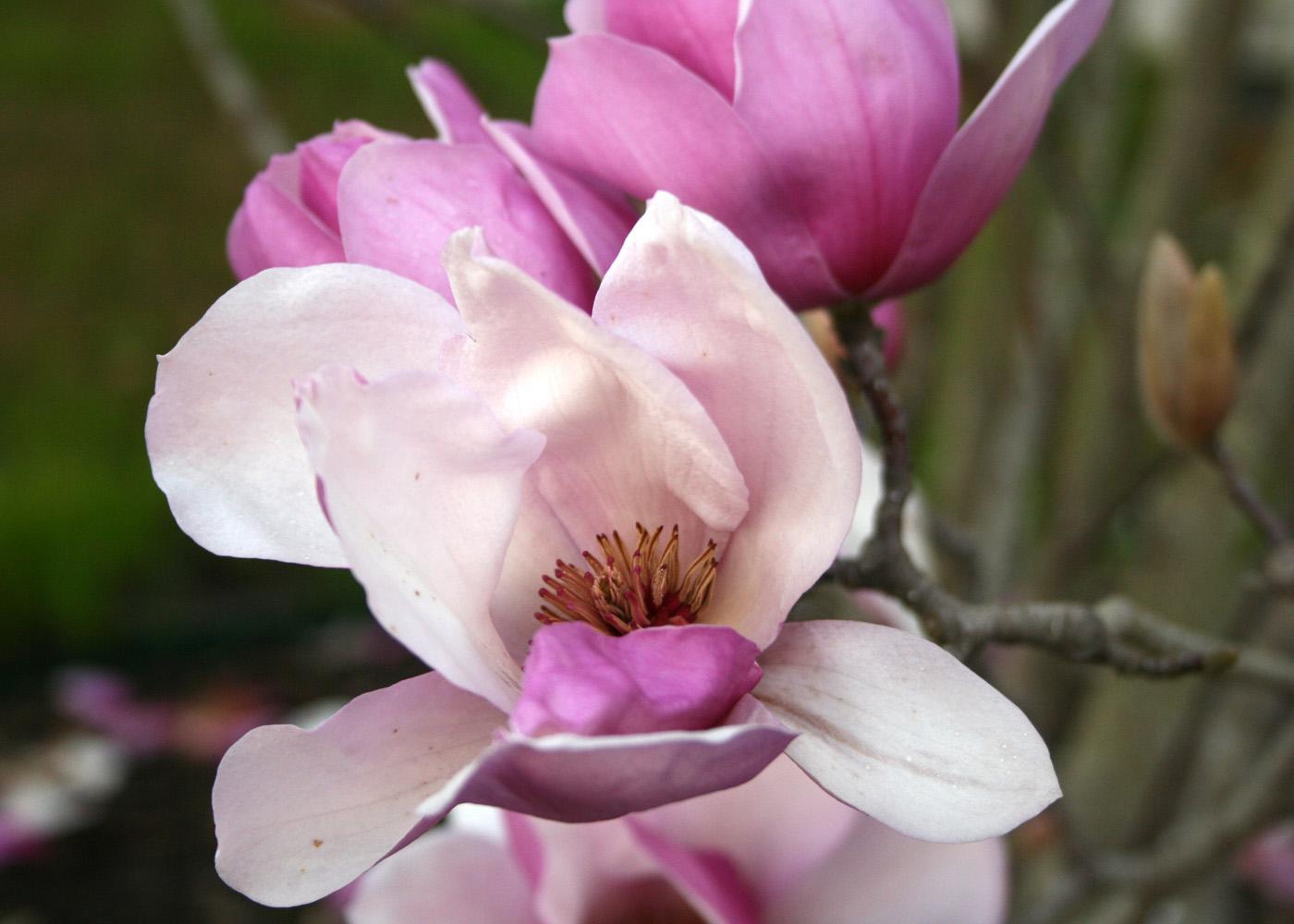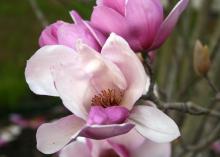Information Possibly Outdated
The information presented on this page was originally released on February 22, 2011. It may not be outdated, but please search our site for more current information. If you plan to quote or reference this information in a publication, please check with the Extension specialist or author before proceeding.
Deciduous magnolias signal spring's arrival
Every year after several warm and sunny days in late February or early March, we begin to see just a little color peeking out of flower buds in our landscape. Then suddenly there is a rush of color, ranging from the faintest pinks to the boldest purples.
I get calls from people surprised to see these trees covered in gorgeous blooms. When I tell them the tree is a magnolia, some are astonished to learn there are magnolias other than the Southern Magnolia.
The magnolia that surprises people the most is the exotic saucer magnolia, which has beautiful flowers and fragrance.
Saucer magnolia, known botanically as Magnolia x soulangiana, is by far the most popular of the flowering magnolias. The saucer magnolia is a cross between the white-flowered Magnolia denudate and the purple-flowered Magnolia lillflora, which dates back to the 1820s. The story goes that the saucer magnolia was developed to bring beauty back to the European landscape after the Napoleonic Wars.
Saucer magnolia is considered a small tree and has a broad, multistem architecture. It typically grows to be about 20 feet by 20 feet, though I have seen specimens larger than this. Prune the tree to control its size. The best time to prune this spring-flowering tree is immediately after flowering.
Leaves vary depending on the selection. Leaves have an elliptical shape and can be up to 8 inches long. They add textural interest to the landscape.
But because the trees bloom before the leaves emerge, the flowers are the main attraction. They are huge -- up to 10 inches across. The colors can be white or pink or bold purple, depending on the variety. There are many selections and cultivars to choose from, and deciding on one can be difficult.
Some home gardeners consider the saucer magnolia’s flowers a signal that the end of winter is near because it normally flowers in the middle to late spring, past the risk of late frosts. However, I don’t recommend you start planting tomatoes based on the flowering of your saucer magnolia.
Saucer magnolias are a good choice as a low-maintenance plant. Plant them in full sun in well-drained soil. Make sure the soil doesn’t dry out completely, as this causes the saucer magnolia to drop its leaves prematurely.
Flowers buds don’t develop as well during drought conditions, so water your saucer magnolias deeply a few times during drought stress to help ensure a beautiful spring next year.








